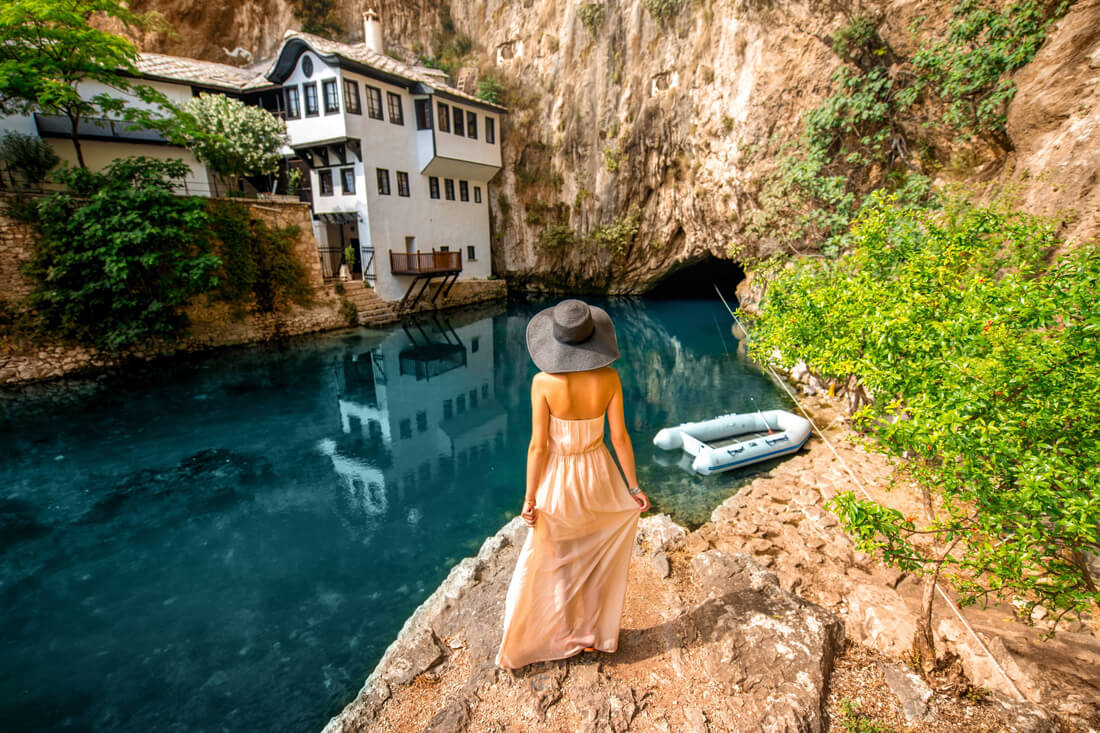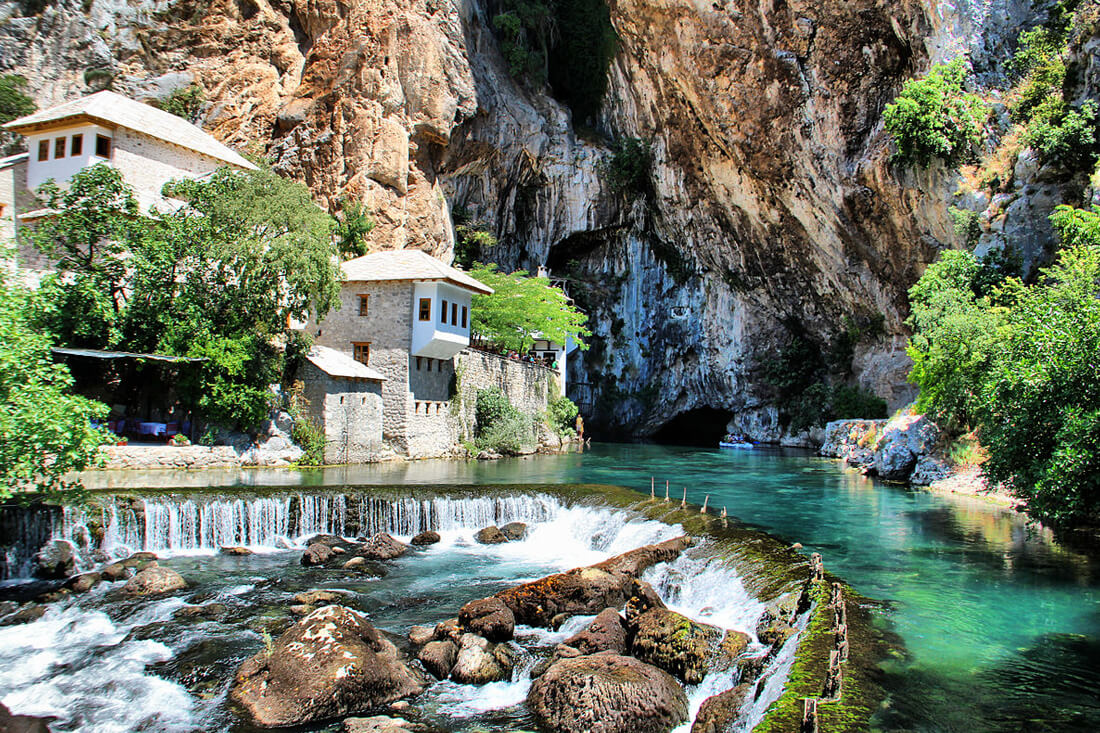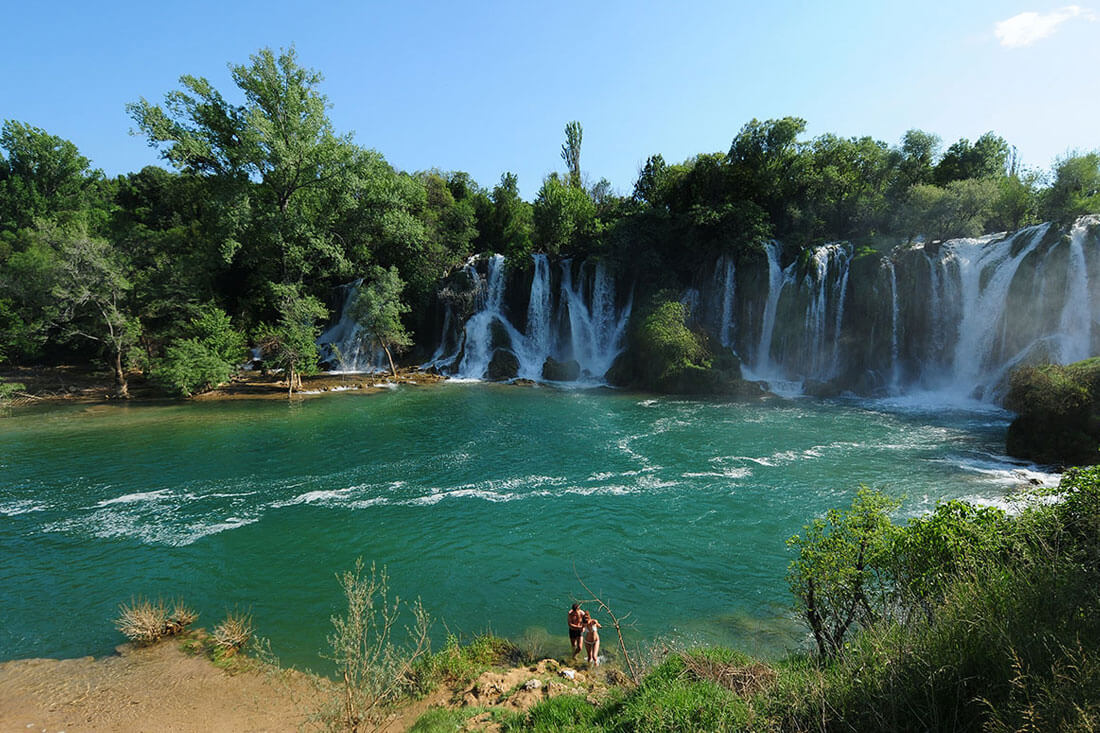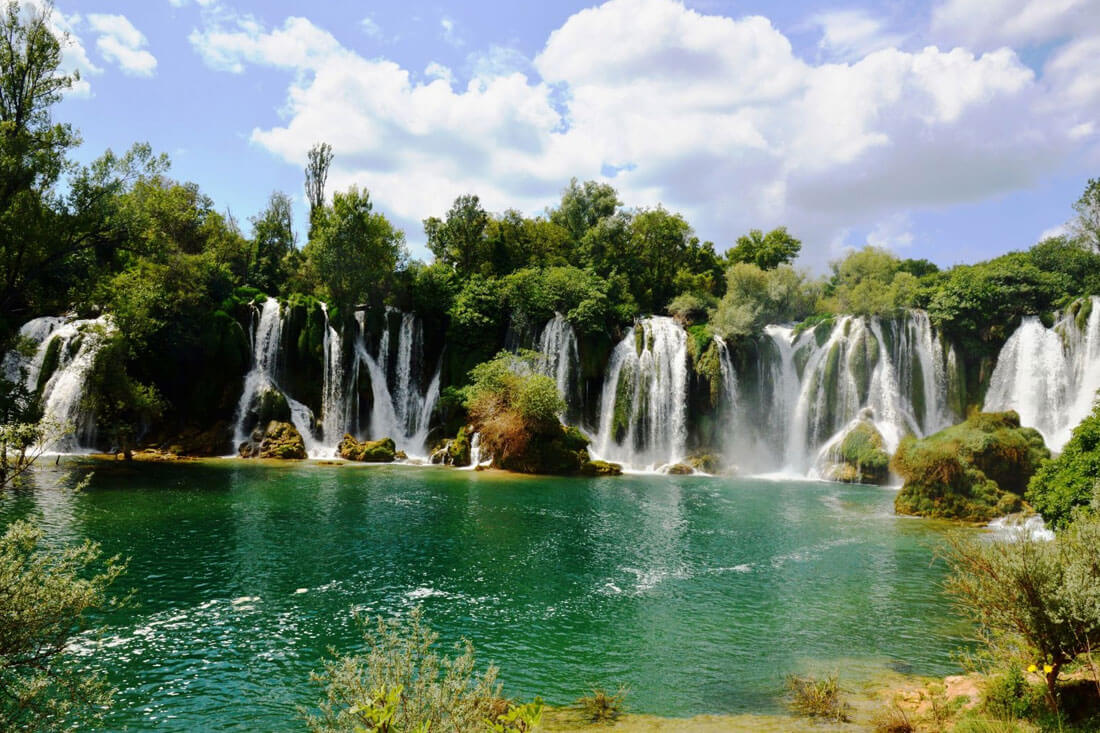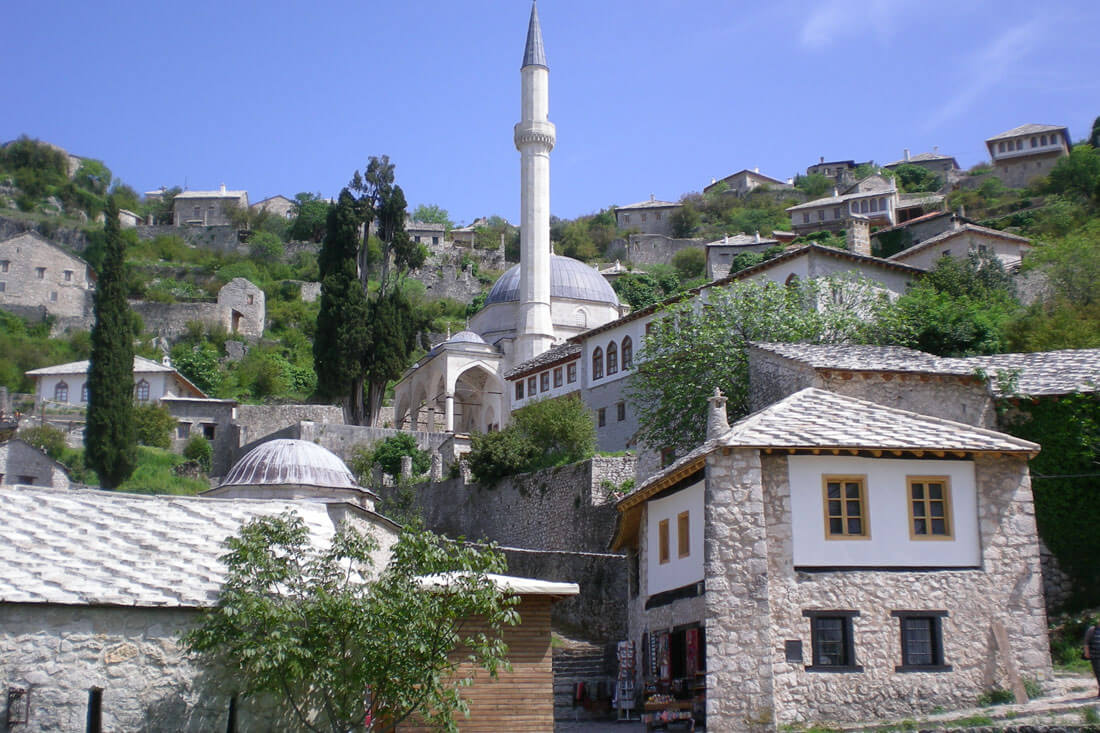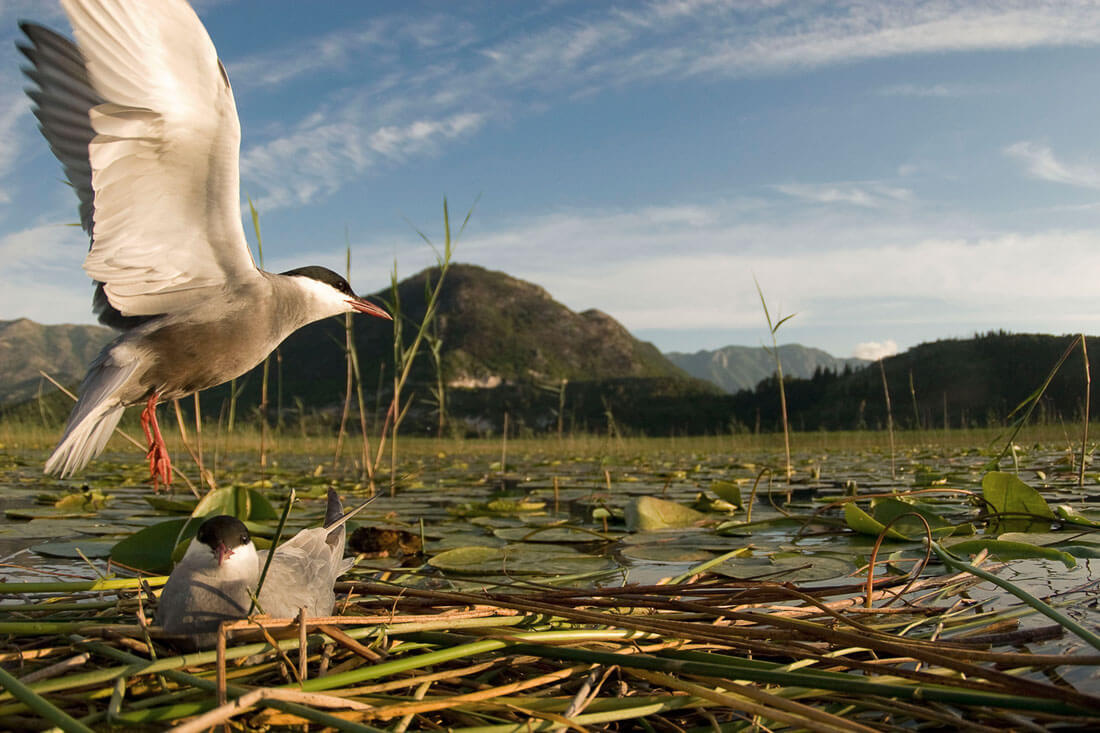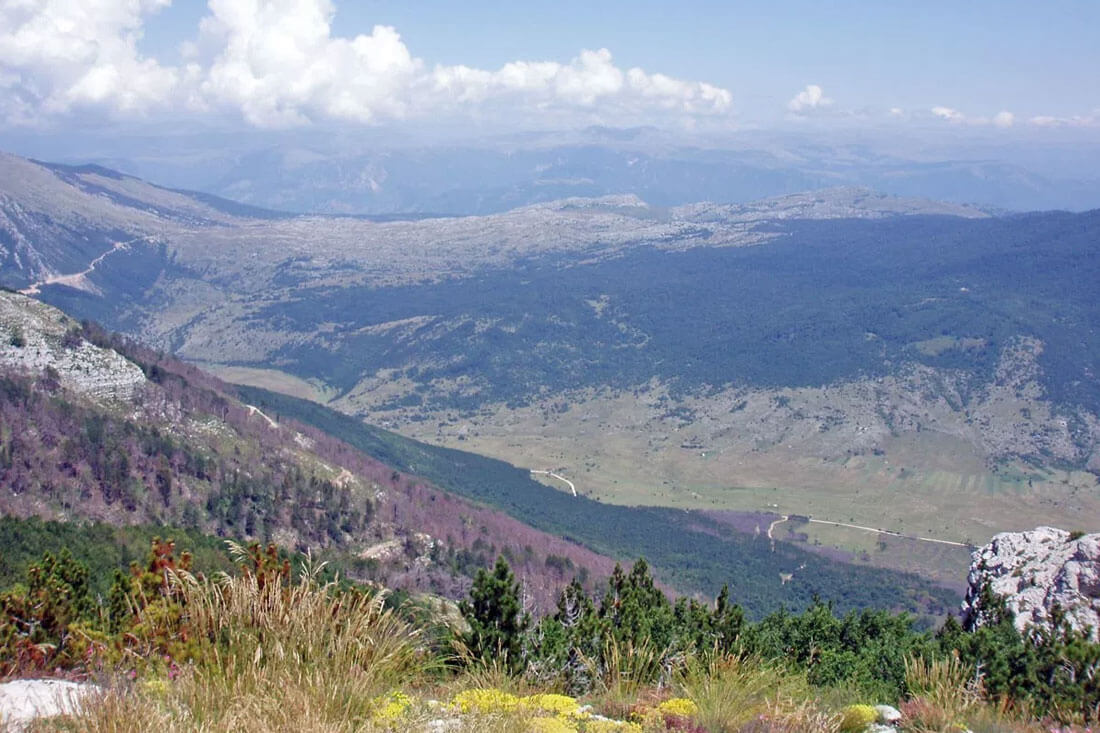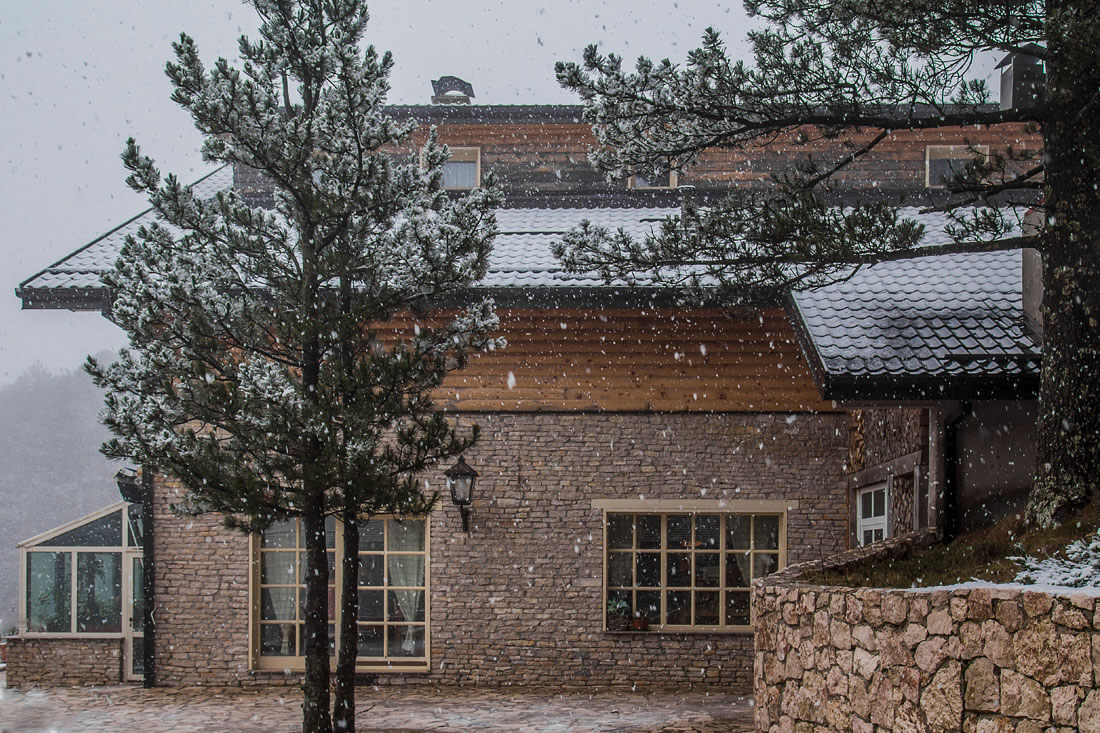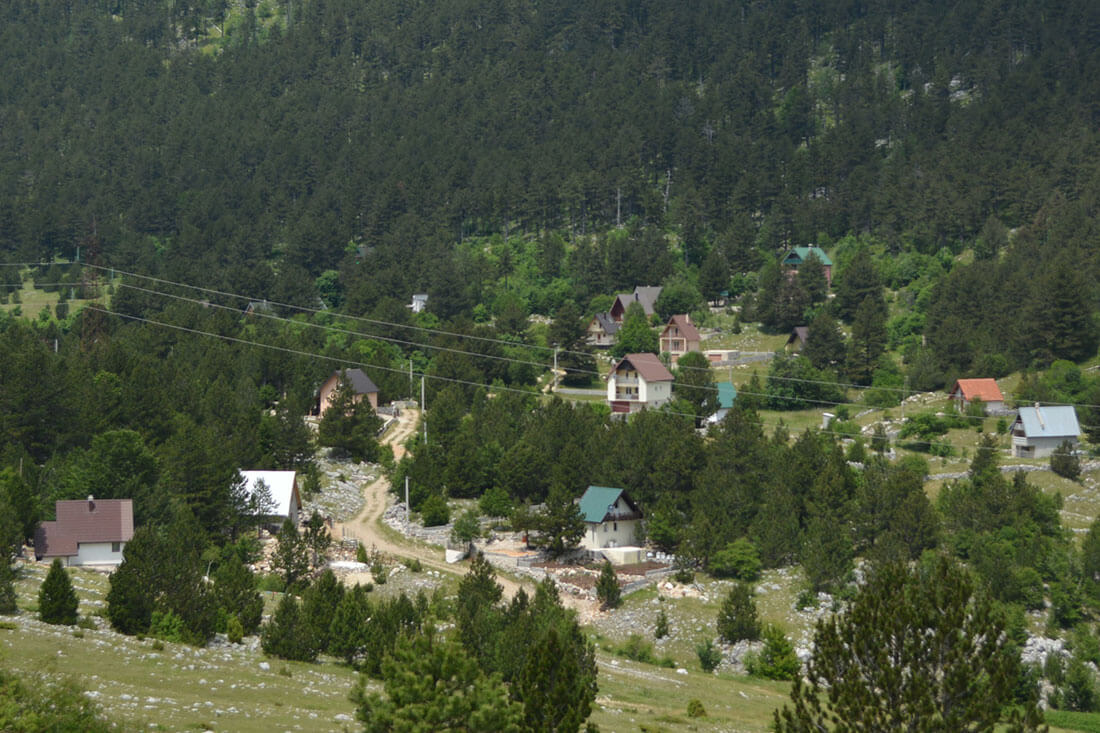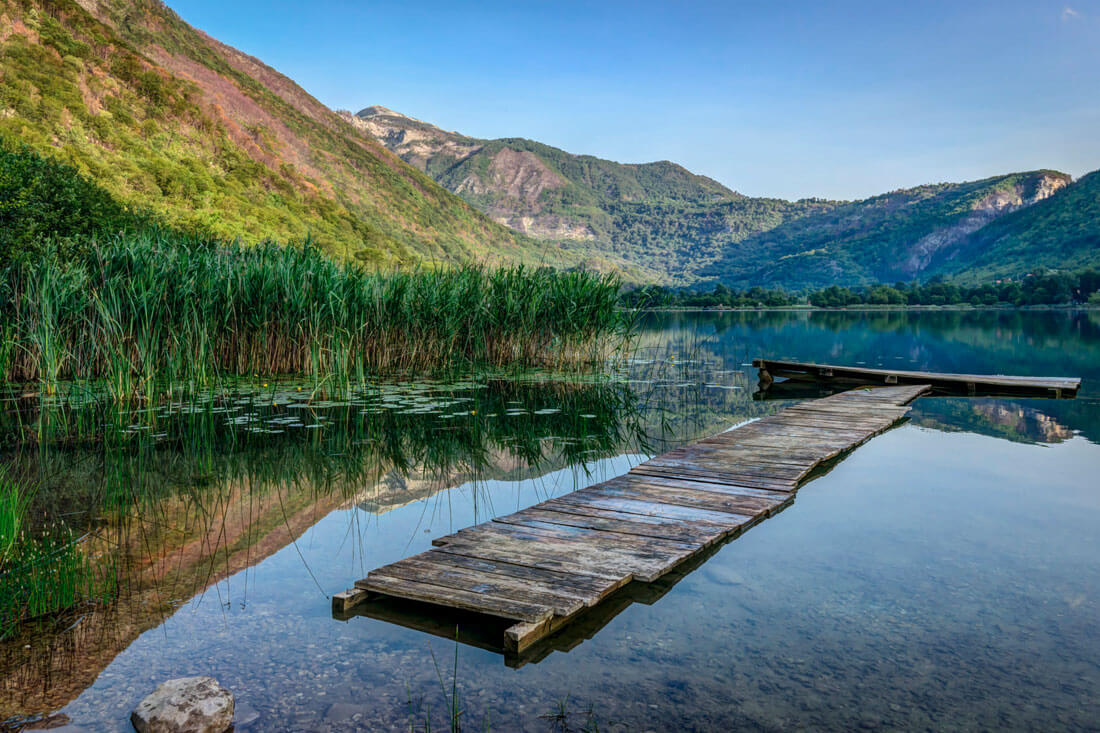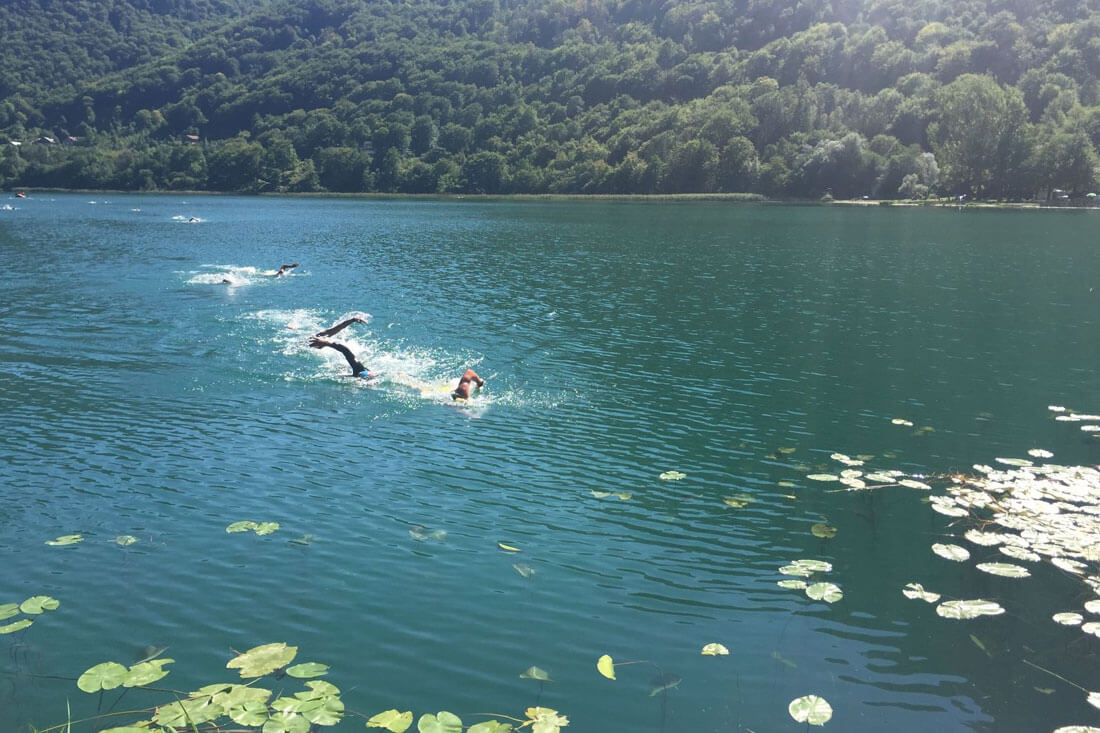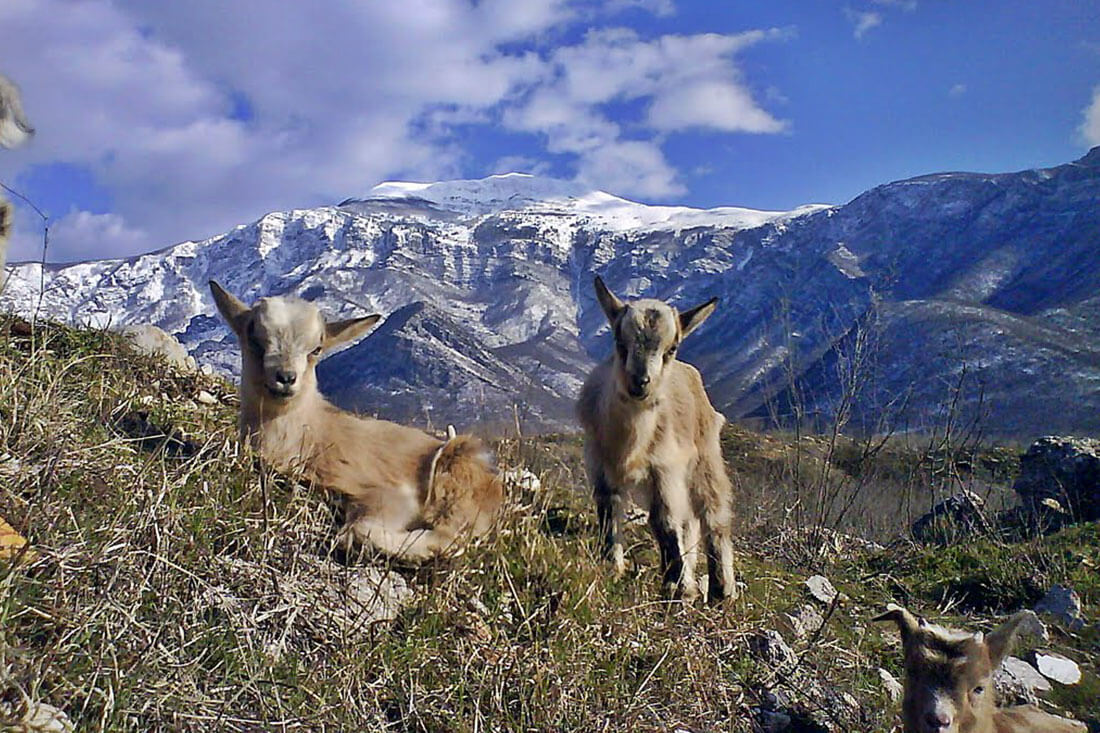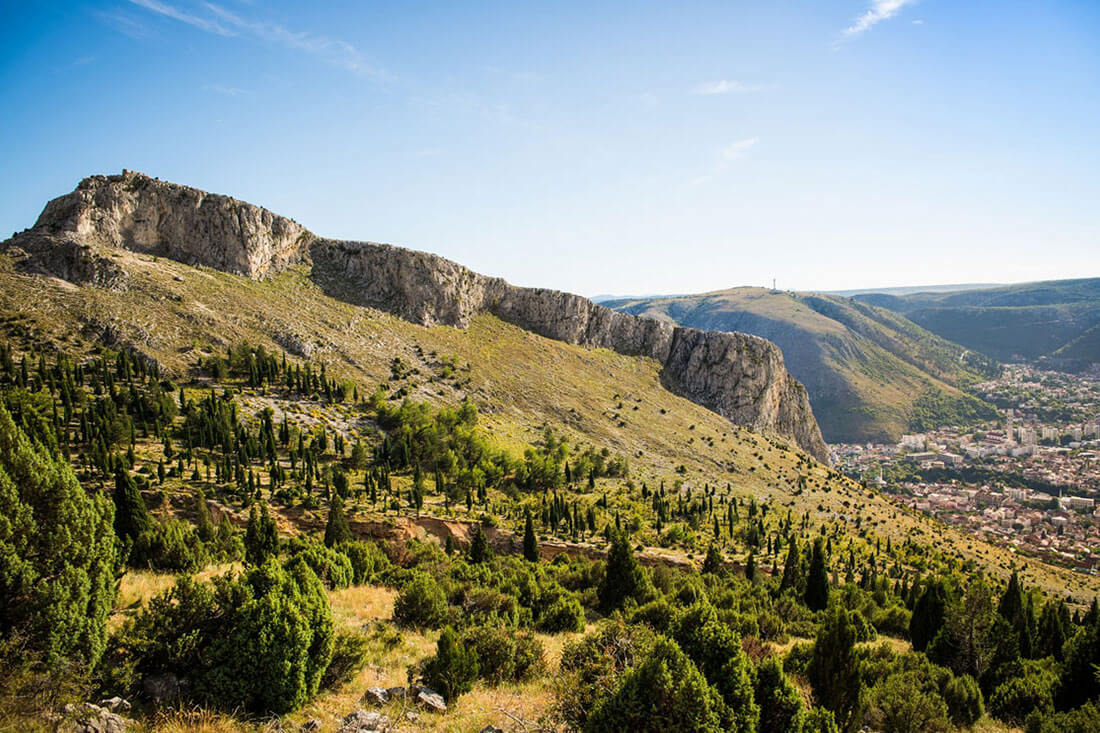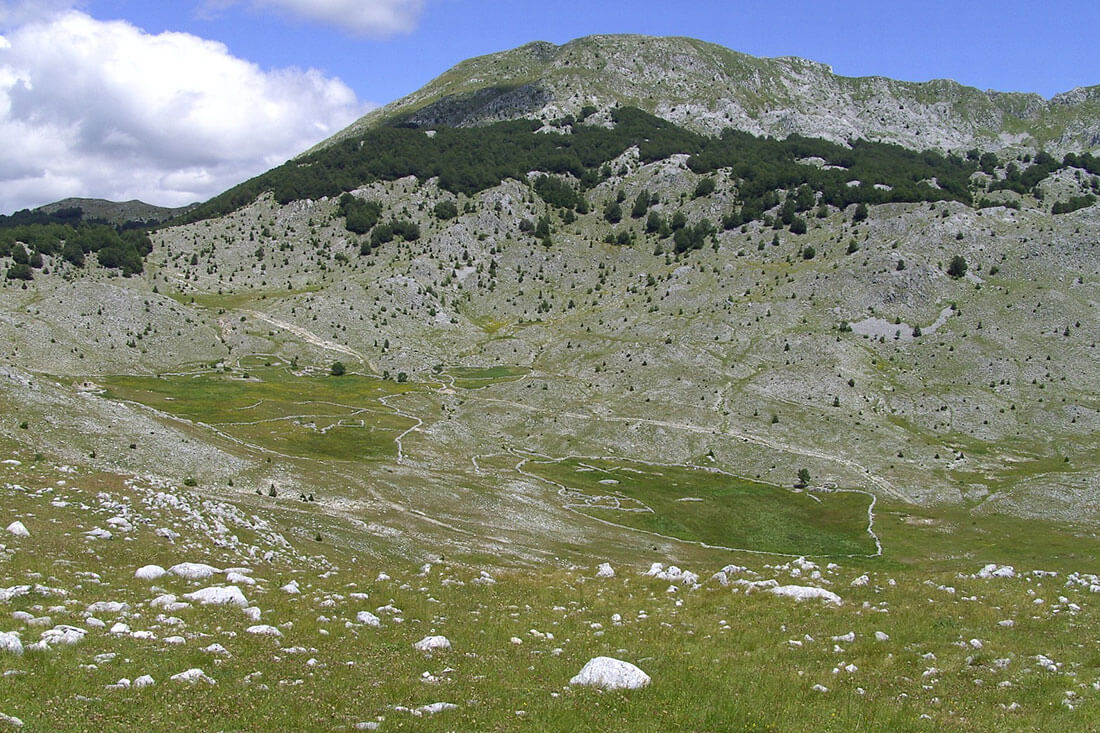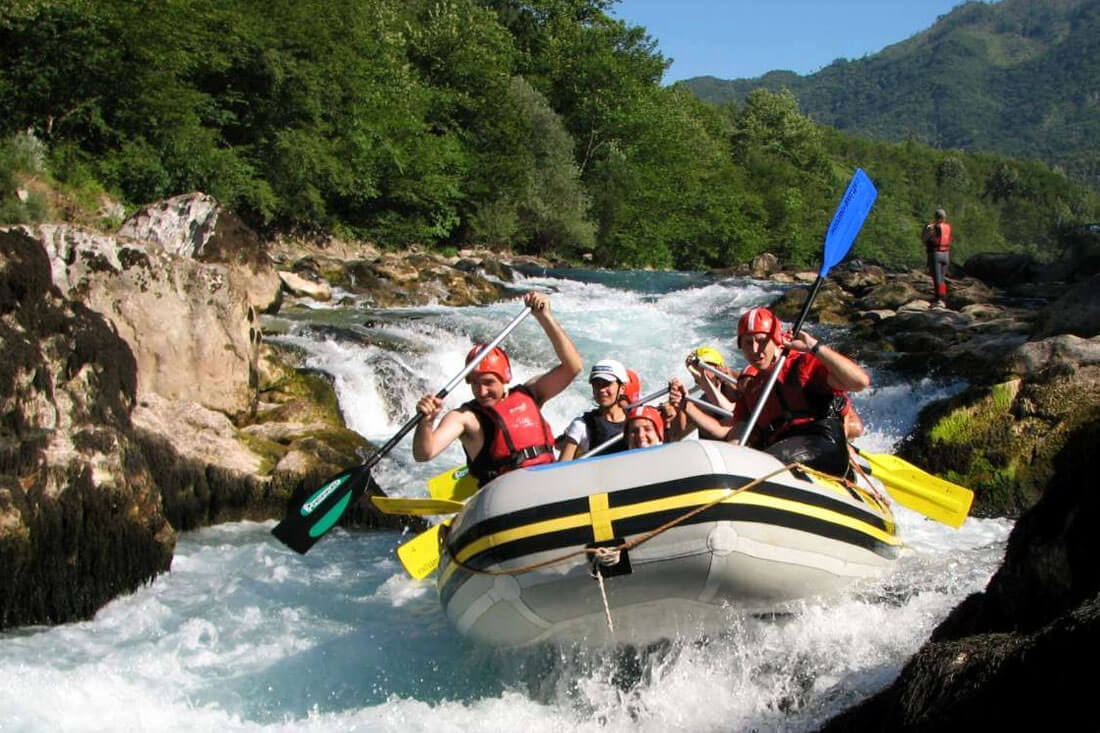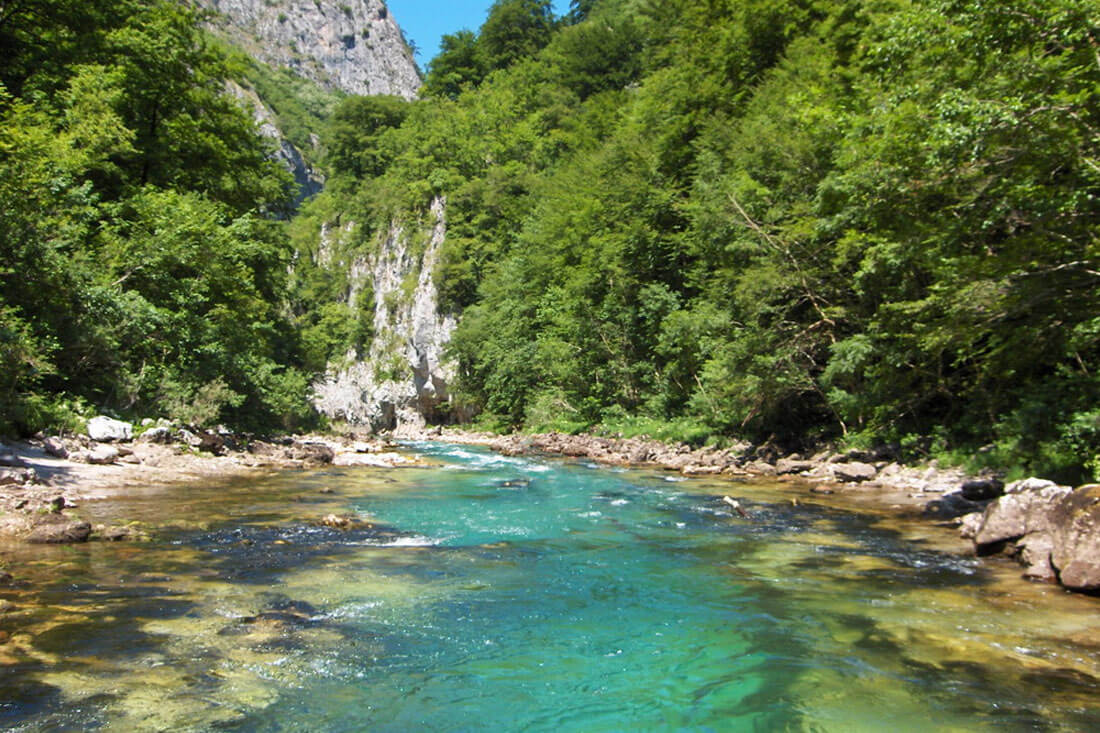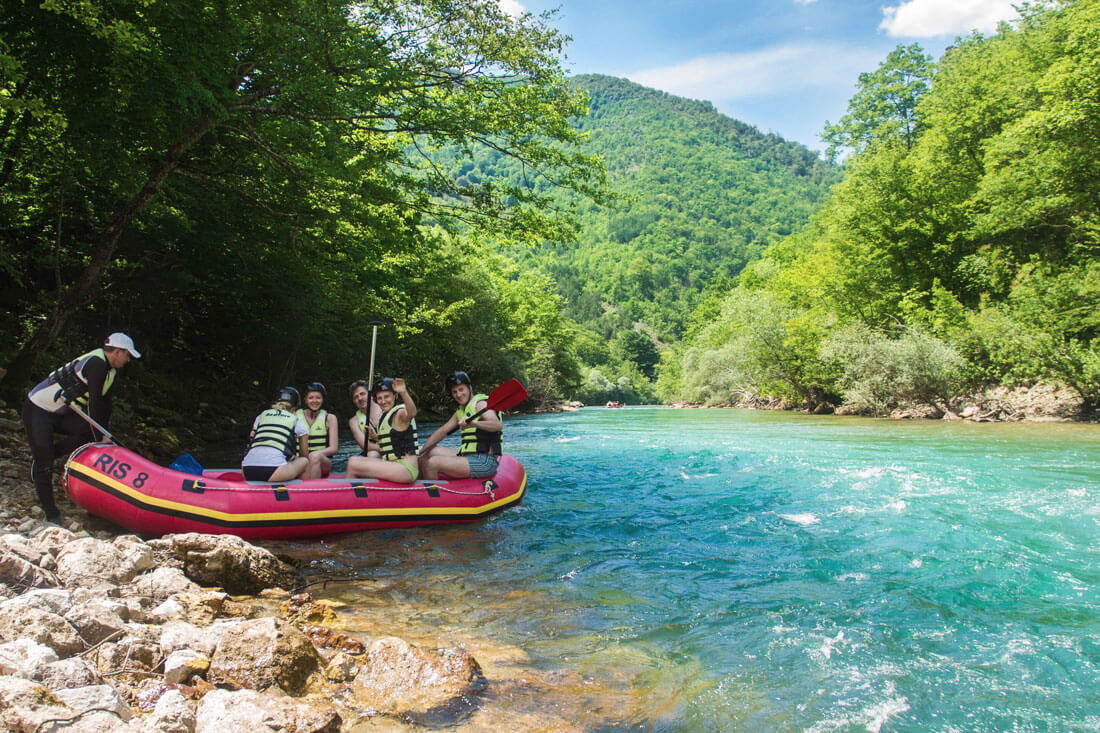Blagaj – Buna River
At only 12 km from Mostar, near the small town of Blagaj, is the famous natural spring of the Buna River, the largest karst spring in Europe, with an average annual flow rate of 43 m³ per second. The spring is to be found under a 200 metre high rock and, very near it, stands the fascinating dervish Tekija monastery that, together with its surrounding landscape, creates a unique and unrepeatable scenery. The spring flows out of a rock face, 15 metres wide, and skin-divers who have seen the grotto underneath it, have discovered that the underground current of the spring continues inside for 200 metres. Its waters, particularly cold and clean are full of precious trout, endemic of streams.
The Waterfalls of Kravice
Among the most fascinating naturalistic features of this region are the sparkling waterfalls of Kravice, about 40 km from Mostar. The waters of the Trebižat River branch out, cascading from the tuff walls from a height of 30 metres, and they form a natural amphitheatre, 150-metre wide, creating spectacular effects that bring to mind, even if in a more modest dimension, the imposing Niagara waterfalls. Popular in the summer season above all with rafting enthusiasts and locals, it is the perfect place for all those who wish to relax and enjoy themselves in the midst of an uncontaminated atmosphere, accompanied by the constant sound of waterfalls in the background. Near to them, there is also a small grotto with stalactites made of calcium carbonate, an old mill and a sailing ship, all to be admired. The Trebižat River also off ers pleasant canoe trips, organized by local experts, with 10-km river journeys for about 35 Euros per person (inclusive of guide, canoe and equipment). An experience really not to be missed where the frenetic pace of daily life seems to be only a far-off memory.
Počitelj
Called the «City of Stone» by the Nobel prize winner Ivo Andrić, Počitelj is a splendid Ottoman city dating back to the Middle Ages. It is situated on the left side of the Neretva River, about 30 km from Mostar. Here, King Tvrtko built a fortress in 1383, later conquered by the Turks in 1471, as can be seen by the many Ottoman monuments still existing: the Hadži Alija Mosque (16th century), the Madrasa (or Islamic School), Sinan-Ibrahimpaša (17th century), the hammam (17th century), and the public kitchen («im-aret»), the inn («han») and the Clock Tower (17th century), situated on top of the hill on which the town soars. Počitelj is a real, open-air museum and a much cherished place by numerous artists who, in this magical scenery, fi nd inspiration for their works of art.Walking through the streets of Počitelj is an experience not to be missed.h e town can be reached by coaches (Mostar Bus Company) that arrive at Čapljina from Mostar, departing from the “Lira” stop. The bus service runs from Monday to Saturday.
Hutovo Blato Natural Park
Ducks, pheasants, hawks and many other birds can find a safe and protected refuge here, before leavingfor North-Africa; there are also numerous examples of fish, coming from the Adriatic Sea, which come here to lay their eggs. The marshy area is formed by the Krupa and Matica Rivers which flow into the Neretva River. The mild climate has also conditioned the development of a very rich vegetation. Bird watchers must absolutely not miss the opportunity of seeing this jewel of nature and tourists can enjoy photographic boat safaris and other activities.
Rujište
Rujište is a mountain village, only 25 km from Mostar, standing on the slopes of Mount Prenj, at an altitude of 1050 metres. A tourist destination in both summer and winter, Ruišta is the starting point for mountaineers wishing to climb Mount Prenj, a stunning place with peaks over 2000 metres (the highest peak, the Zelena Glava, reaches a height of 2155 metres). During the winter period, the town welcomes hordes of skiers heading towards the ski lifts while, in summer, it is the perfect place to escape from the high temperatures in Herzegovina. A curiosity of this place is the presence of an endemic species of pine, called “munika”, as well as uncontaminated surroundings.
Boračko Lake
The Boračko Lake, 20 km from Konjic, standing at an altitude of 420 metres, 720-metre long and 402-metre wide, is the largest natural mountain basin apart from being one of the most beautiful of Bosnia-Herzegovina. Surrounded by green, coniferous and broad-leaved woods, characterized by an alpine climate and by crystal-clear waters (in which there is an abundance of particularly delicious trout and prawns), the lake attracts crowds of tourists, sportsmen, hunters and excursionists, all bewitched by the romantic charm of the place. In the midst of the thick vegetation, it is possible to come across pretty young goats grazing freely.
Mount Velež
The Mount Velež region, in the central-southern area of Herzegovina, is the perfect place for lovers of mountaineering, rock climbers and ecological tourism enthusiasts. h e Reserve’s summit is Mount Velež, at an altitude of 1958 metres. The Mount’s western side is the most straightforward way to reach the top and, while climbing, the valleys of the Buna and Neretva Rivers can be constantly admired. h e other sides are meant only for expert mountaineers and require particular ability and a specialized equipment.In this mountainous area there are three important communities: Blagaj, near to the source of the Buna River; Nevesinje, situated in a wide mountain valley; and Podveležje, at the feet of Mount Velež (“Pod” in fact means “under”). The mountain community of Podveležje has to bear with the coldest winters of the area, but with mild summers. The few inhabitants of this highly fascinating area mostly work in agriculture, and in the breeding and production of dairy products. An unusual aspect of the lands of Podveležje is the way its inhabitants have managed to maintain the ancient styles of life and natural habitats. It is a truly unique attraction for foreign tourists and for locals who come to hunt, to go trekking, to go rock climbing, to go on excursions (expert guides accompany whoever is interested in reaching the peak of the Velež), while tasting delicious traditional dishes and enjoying an unforgettable landscape, suspended in time.The region of Podveležje is also the first in the whole of Bosnia Herzegovina to have encouraged the development and diff usion of ecological tourism in this area.
Rafting on the Neretva River
A truly unforgettable experience is rafting on the rapids of the River Neretva which is definitely not to be missed by enthusiasts of extreme sports and by all those who wish to enjoy a direct contact with nature. This river adventure starts from Konjic, a charming little town, about 70 km from Mostar, known for its production of wooden objects which maintain the old traditions (local craftsmen have been passing on this art from generation to generation), and which is surrounded by the highest peaks of Bosnia-Herzegovina: the Prenj (2101 metres), Bjelašnica (2067 metres) and Bitovnja (1744 metres) mountains. In this region, there are 15 Rafting Clubs ready to off er their services to anyone interested who, after having been suitably equipped and prepared, can set off for a unique adventure, to be experienced in perfect safety. The nearby beach of Džajići, about 6 km from the centre of town, is both its starting and finishing point. The part of the river to be navigated is 25 km long and the route, including the necessary pauses, takes about 5 hours. Daily excursions cost approximately from 35–50 Euros, per person. For those who appreciate more relaxing activities, there are canoes and kayaks to be rented in which the splendid landscape can be equally enjoyed, while gently rocked by the limpid Neretva water.


